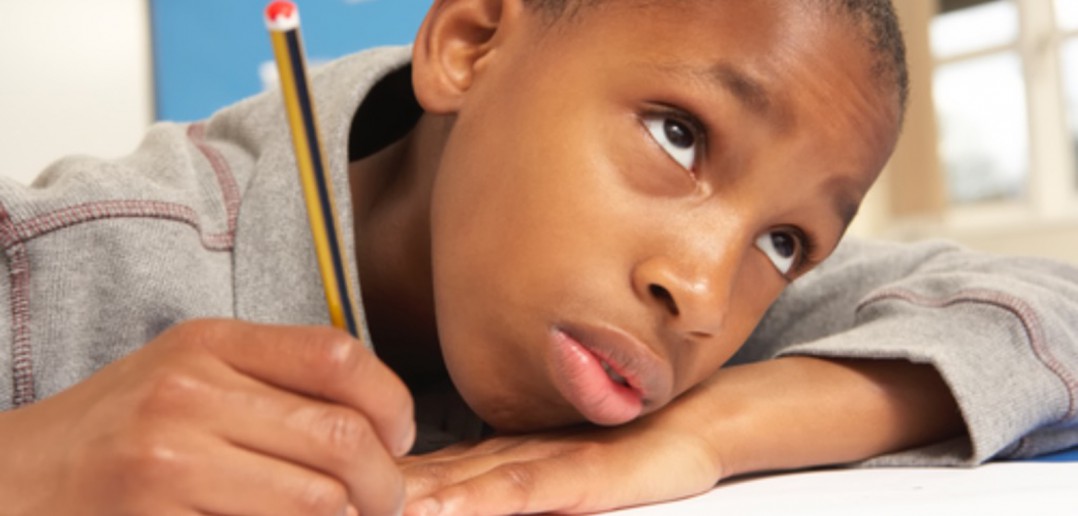
by PRIDE Reading Program Admin | Jan 26, 2017 | A PRIDE Post, Auditory Processing Disorder
Children with auditory processing disorder will often struggle in a classroom setting, especially in the areas of following directions, reading, spelling, writing and comprehension. Auditory processing disorder results in a child mis-hearing, mis-pronouncing, and mis-repeating information. These children often have difficulty hearing the difference between sounds or words that are similar (coat/boat or sh/ch/. If you can’t hear the sounds properly, you can’t say the sounds properly you will also not read or write the sounds properly.
Here are some strategies for teachers and other professionals that work with children diagnosed with an auditory processing disorder in the classroom:
- Sit the child as close to the teacher as possible. Most children with auditory processing disorder will have difficulties hearing among other noises. If the child is sitting towards the back of the class he will only hear the sounds surrounding him – not the teacher’s voice. Therefore, just by moving the child nearer to the sound, at the front of the class will make a huge difference.
- Have the child look at the speaker. The child with auditory processing disorder needs to see the face and mouth of the speaker. Give the child as much eye contact as possible.
- Encourage all participants in the classroom to project their voices clearly. So many children have soft voices. When the teacher is asking questions and calling on students, the teacher can repeat the answer of the quieter voiced children so that everyone is able to hear and understand the answer. Not being able to hear is a lost opportunity for learning!
- Implement lots of visual images. Using visual stimuli when explaining will give the child with auditory discrimination problems lots of clues. These can include charts, pictures or illustrations. Teachers can use their own body language to serve as a visual. This could be hand movements or facial expressions. Think of ESL teachers and how they utilize TPR (total physical response).
- Praise the child often for being a good listener!
_______________________________________________________________________
Karina Richland is the Founder and Director of Pride Learning Centers, located in Los Angeles and Orange County. Ms. Richland is a certified reading and learning disability specialist. Ms. Richland speaks frequently to parents, teachers, and professionals on learning differences, and writes for several journals and publications. You can reach her by email at karina@pridelearningcenter.com or visit the Pride Learning Center website at: www.pridelearningcenter.com

by PRIDE Reading Program Admin | Dec 4, 2016 | A PRIDE Post, Language & Reading
Research suggests that the amount of interactive language a child is exposed to in the home correlates greatly with the development of verbal expressions and reading skills. To put your child on the right track for language and reading development, make sure your home is a rich and encouraging language environment.
Here is a list of tips and strategies that can be used to promote healthy language and reading development in children:
Read together daily for language and reading development
Often parents stop reading to their children once the child learns to read independently. This is a big mistake. Parental reading skills are usually more advanced, so they can expose children to higher grammar, vocabulary, images, and ideas in speech. Be aware when reading to your child that they often may not ask what an unfamiliar word means. When coming across an unfamiliar word you can ask your child to define it and if necessary provide them with the definition, synonym, antonym or physical enactment of the meaning.
Don’t interrupt or fill in the blanks
Patience is essential for encouraging language development in children. Give your child time to put their thoughts into words and opportunities to practice. If simply waiting doesn’t do the trick for a child with word retrieval problems, then prompt them with a ridiculous alternative. For example, if your child says, “I’m looking for the, uh… um…er…,” you can ask “rhinoceros… leprechaun?” Usually after a few giggles the child is relaxed enough to find the right word.
Spend time each day having your child describe the details of their day or particular topics of interest or ideas
The dinner table tends to be a natural conversation venue for the family to talk and catch up on daily events. Also, before turning out the lights in bed is another great time to let your child fill you in on the day’s events as well as create conversation and bonding time in a relaxed environment. If your child speaks very little or has nothing to say, you can provoke them by taking a stance with which you know they’ll disagree. For instance, if the child loves legos, say, “some people think buying legos for children is a bad idea, because they cost a lot and don’t serve any purpose. What do you say?”
Make sure your child’s skills are constantly challenged and force to grow
Home is a place where children feel free to take risks with language. They feel comfortable making mistakes, asking questions and discussing complex topics they would otherwise be afraid to explore. Continue to build and challenge your child’s vocabulary. Introduce a new word and offer its definition or use it in context that is easily defined. For example, “I think I will drive you in the vehicle this morning instead of making you walk to school.”
Avoid electronic devices, television, etc. whenever possible to encourage language and reading development
Research has shown that the encounters that best promote language growth are interactive – back and forth, face-to-face exchanges conducted in a relatively quiet background. Children that are receiving more noise stimulation than language stimulation will fail to develop the language skills they need to succeed in school or to communicate effectively with their parents, teacher, and peers.
Speak in complete sentences and use words with precise meanings
Instead of letting your child hear you say “ where is that thingy,” or where is that whatchamacallit” try to always speak with precision and accuracy. Model the richness of language for your child by adding multiple word meanings and using different words to express the same thought.
Try these simple Language and Reading Development Tips at home – and please let us know if they helped.
Karina Richland is the Founder of Pride Learning Centers, located in Los Angeles and Orange County. Ms. Richland is a reading and learning disability specialist and speaks frequently to parents, teachers, and professionals on learning differences. You can reach her by email at karina@pridelearningcenter.com or visit the PRIDE Learning Center website at: www.pridelearningcenter.com

by PRIDE Reading Program Admin | Jan 31, 2016 | A PRIDE Post, Orton-Gillingham
Learning to read in English would be such a simple task if all similar-sounding phonemes were spelled the same. They aren’t. English is such an unfair language with so many iniquitous rules! For most of us, learning to read means memorizing the symbolic code of letter combinations and then using them in new contexts. Many of us just read naturally, understanding that these letter combinations create words and sounds. Linguists call these sounds ‘phonemes.’ Our brains just register the words and are equipped to read three or four words ahead of time. We are also mentally able to pull words apart, separate them into syllables and apply all of those unfair spelling rules easily and logically.
For a student with a reading disability, this process of reading does NOT come naturally. Students with dyslexia, for example, do not use the process of sounding out phonemes (decoding) while reading and applying spelling rules while writing (encoding). Dyslexics, in general, memorize words in entirety and make mental pictures of each word they learn. The predicament with this strategy is that when they get to a word that they are unfamiliar with, they have no coping mechanisms to attack that particular word.
An example of the difficulty for some of us to learn which combination of letters creates which phoneme is the sound of the letter ‘a’ as in the word ‘cake.’ The long ‘a’ sound is written differently in different words, as in baby, ape, sail, play, steak, vein, eight and they. For students with reading disabilities, something interferes with the acquisition of these written phonemes, and in order to learn, these students must be taught how to read in a different way. One such way is using a multi-sensory method.
Students with a reading disability often struggle with auditory and/or visual processing. They have troubles recalling words and how they are pronounced. This means that they do not comprehend the roles that sounds play in words. These students have difficulties rhyming words as well as blending sounds together to form words. These students do not understand or acquire the alphabetic system expected of them in the early years. If a student with a learning difference is given a task that uses just hearing and vision, without drawing upon other senses, this student will be at a disadvantage. When taught with a multi-sensory approach, students will learn alphabetic patterns, phonemes and words by utilizing all pathways – hearing (auditory), seeing (visual), touching (tactile) and moving (kinesthetic).
When learning the vowel combination ‘oa,’ for example, the student might first look at the letter combination on a picture of a GOAT, then close his/her eyes and listen to the sound, then trace the letters in the air while speaking out loud. This combination of listening, looking, and moving around creates a lasting impression for the student as things will connect to each other and become memorable. Using a multi-sensory approach to reading will benefit ALL learners, not just those with reading disabilities.
The other significant component in helping a struggling reader learn to read and write is utilizing an Orton-Gillingham approach. In Orton-Gillingham, the phonemes are introduced in a systematic, sequential and cumulative process. The Orton-Gillingham teacher begins with the most basic elements of the English language. Using repetition and the sequential building blocks of our language, phonemes are taught one at a time. This includes the consonants and sounds of the consonants. By presenting one rule at a time and practicing it until the student can apply it with automaticity and fluency, students have no reading gaps in their word-decoding skills. As the students progress to short vowels, they begin reading and writing sounds in isolation. From there they progress to digraphs, blends and diphthongs.
Students are taught how to listen to words or syllables and break them into individual phonemes. They also take individual sounds and blend them into a word, change the sounds in the words, delete sounds, and compare sounds. For example, “…in the word steak, what is the first sound you hear? What is the vowel combination you hear? What is the last sound you hear? Students are also taught to recognize and manipulate these sounds. “…what sound does the ‘ea’ make in the word steak? Say steak. Say steak again but instead of the ‘st’ say ‘br.’- BREAK!
Every lesson the student learns is in a structured and orderly fashion. The student is taught a skill and doesn’t progress to the next skill until the current lesson is mastered. As students learn new material, they continue to review old material until it is stored into the student’s long-term memory. While learning these skills, students focus on phonemic awareness. There are 181 phonemes or rules in Orton-Gillingham for students to learn. Advanced students will study the rules of English language, syllable patterns, and how to use roots, prefixes, and suffixes to study words. By teaching how to combine the individual letters or sounds and put them together to form words and how to break longer words into smaller pieces, both synthetic and analytic phonics are taught throughout the entire Orton-Gillingham program.
Students with reading disabilities need more structure, repetition and differentiation in their reading instruction. They need to learn basic language sounds and the letters that make them, starting from the very beginning and moving forward in a gradual step by step process. This needs to be delivered in a systematic, sequential and cumulative approach. For all of this to “stick” the students will need to do this by using their eyes, ears, voices, and hands.
Learn more about the New PRIDE Reading Program
__________________________________________________________________________________
Karina Richland, M.A. is the Managing Director of Pride Learning Centers, located in Southern California. Ms. Richland is a reading and learning disability specialist. She speaks frequently to parents, teachers, and professionals on learning differences, and writes for several journals and publications. You can visit the website www.pridelearningcenter.com

by PRIDE Reading Program Admin | Nov 16, 2015 | A PRIDE Post, Spelling
I know many adults who truly believe that they cannot spell, saying “I can’t spell” in the same manner that they would say, “I can’t swim.” But spelling, like swimming, can be taught. However, while most teachers know how to test for spelling, very few know how to teach spelling.
There is a misconception that spelling is a form of dyslexia, a disorder where one is unable to recognize words or sound them out phonetically. The acts of reading and writing occur mainly in the left temporal lobe of your brain – the part of the brain near your left ear. The act of spelling, however, occurs mainly in the occipital lobe of your brain – the visual cortex in the back of your head responsible for forming and retrieving visual memories. So, to remember how to spell a word, you must first store the memory of that word, and then retrieve that “picture” when you are about to write it.
The Three Types of Memory
When I teach spelling to children and to adults, I first talk about the three types of memory. The first type of memory can be called “Blackboard” memory, which lasts from 1-30 seconds. The goal of your brain in Blackboard memory, surprisingly, is to forget what you’ve seen. For example, if you’re driving down the street and see various business signs, “Tom’s Bakery,” “Joe’s Key Shop”, “Chan’s Dry Cleaners,” etc., you certainly don’t want to keep remembering Joe’s Key Shop for the rest of the day. Rather, a “slide” of Joe’s Key Shop is stored in your visual memory, but you’ve made no pathway to consciously retrieve the memory. Occasionally there may be an accompanying smell (such as the bakery next to the key shop) which may remind you of the key shop, but you’ll most likely not remember that the key shop exists. So, when you actually need a key made, you’ll probably have to search the listings for one, and lo and behold, there’s Joe and his key shop right around the corner!
The second type of memory can be called Short-Term Memory, which lasts from 31 seconds to about 2-3 months. Most children rely on Short-Term Memory to recall information for tests, midterms, and final exams, but then forget the information the following year (which explains why kids have to be re-taught “mean, median, and mode” every year from elementary to high school). The third type of memory, Long-Term Memory, is the stored memories of experiences and information that we will always be able to recall, either from connection to an emotional event (e.g., World Trade Center) or from multiple uses (e.g., names, phone numbers, addresses, etc.).
The goal of all learning, then, is to place what needs to be remembered into the student’s Short-Term Memory, so that facts, dates, and the spelling of words can be recalled. Once this information is stored in Short-Term Memory, a pathway is established so that the student is able to consciously retrieve the information for up to 3 months. If there is repeated exposure to the information, this pathway becomes even more established, forming a Long-Term Memory.
Simple Technique for Perfect Spelling
Teaching spelling in school is usually done by having a student copy the words over and over again, which of course does not work at all. By copying the words, their spelling never leaves the student’s Blackboard Memory, so the brain does its job well and dutifully helps the student forget the spelling. The goal, then, is to place the spelling of the word in the student’s Short-Term Memory, so it’s “picture” can be retrieved.
Here is a simple technique that you can do at home to help your child succeed in spelling:
1. Have your child write the spelling word on a piece of paper, then trace the letters with his or her index finger while saying the spelling word out loud. Have the child say the word normally while tracing it, not say or sound out individual letters or vowels.
2. Take the paper away and wait a minimum of 30 seconds (e.g., sing the “Jeopardy!” theme or some other song).
3. Give your child a blank paper, saying, “Now, write the word you traced.”
4. If your child spells the word incorrectly – which is likely to occur at the beginning of this technique – go back and repeat steps 1-3.
Once your child has established a pathway to the Short-Term Memory of a word’s spelling, it’s THERE – the brain has no way of knowing if that pathway was established 31 seconds ago, one week ago, or one month ago. And since the pathway is there, your child WILL remember the spelling of the word.
I’ve used this technique with parents and children for many years, even students with mild traumatic brain injury, and I’ve never come across a student who did not suddenly go from the worst speller to the best speller in the class.
Good luck!………………..Dr. David.
Learn more about the New PRIDE Reading Program
_____________________________________________________________________________
David Raffle, PhD, CBIS, is a credentialed special education teacher, educational specialist, and brain injury specialist who performs neuropsychological and psychoeducational testing for special education services, standardized testing accommodations, and modifications in the workplace for children, adolescents, and adults with developmental disabilities, traumatic and acquired brain injuries, attention-deficit/hyperactivity disorder, and autism spectrum disorders.
Visit Dr. Raffle’s website at: https://www.DavidRafflePhD.com or email him at: davidrafflephd@gmail.com

by PRIDE Reading Program Admin | Apr 14, 2012 | A PRIDE Post, Reading Skills
The school year is coming to an end and as a parent of a first grader your thoughts are probably turning towards second grade. Is your child ready for second grade reading?
How do you know?
Here is a list of benchmark reading accomplishments for first grade that was included in a report prepared by a National Academy of Sciences panel titled Preventing Reading difficulties in Young Children, Catherine E. Snow.
- Makes a transition from emergent to “real” reading.
- Reads aloud with accuracy and comprehension any text that is appropriately designed for the first half of grade 1.
- Accurately decodes orthographically regular one-syllable words and nonsense words (e.g., sit, zot), using print-sound mappings to sound out unknown words.
- Uses letter-sound correspondence knowledge to sound out unknown words when reading text.
- Recognizes common, irregularly spelled words by sight (have, said, where, two).
- Has a reading vocabulary of 300 to 500 words, sight words, and easily sounded-out words.
- Monitors own reading and self-corrects when an incorrectly identified word does not fit with cues provided by the letters in the word or the context surrounding the word.
- Reads and comprehends both fiction and nonfiction that are appropriately designed for grade level.
- Shows evidence of expanding language repertory, including increasing appropriate use of standard, more formal language registers.
- Creates own written texts for others to read.
- Notices when difficulties are encountered in understanding text.
- Reads and understands simple written instructions.
- Predicts and justifies what will happen next in stories.
- Discusses prior knowledge of topics in expository texts.
- Discusses how, why, and what-if questions in sharing nonfiction texts.
- Describes new information gained from texts in own words.
- Distinguishes whether simple sentences are incomplete or fail to make sense.
- Can answer simple written comprehension questions based on material read.
- Can count the number of syllables in a word.
- Can blend or segment the phonemes of most one-syllable words.
- Spells correctly three-and four-letter short-vowel words.
- Composes fairly readable first drafts using appropriate parts of the writing process (some attention to planning, drafting, rereading for meaning and some self-correction).
- Uses invented spelling/phonics-based knowledge to spell independently, when necessary.
- Shows spelling consciousness or sensitivity to conventional spelling.
- Uses basic punctuation and capitalization.
- Produces a variety of types of compositions (e.g., stories, descriptions, journal entries) showing appropriate relationships between printed text, illustrations, and other graphics.
- Engages in a variety of literary activities voluntarily (e.g., choosing books and stories to read, writing a note to a friend).
________________________________________________________________________________________________
Karina Richland, M.A. is the Founder and Director of Pride Learning Centers, located in Los Angeles and Orange County. Ms. Richland is a certified reading and learning disability specialist. Ms. Richland speaks frequently to parents, teachers, and professionals on learning differences, and writes for several journals and publications. You can reach her by email at karina@pridelearningcenter.com or visit the Pride Learning Center website at: www.pridelearningcenter.com





